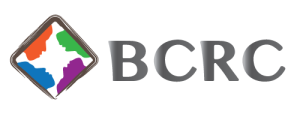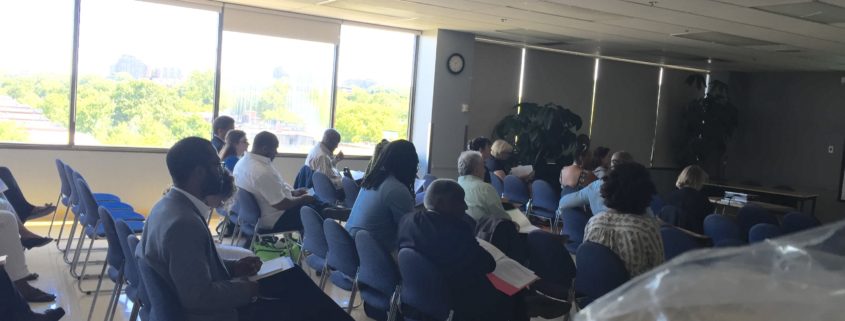Montreal’s 2016 Black Community Forum
On June 16, 2016, the BCRC went down in history as the hosts of the, second only, Black Community Forum in Montreal. Held at 6767 Cote-des-Neiges, where the BCRC offices are located, the Forum brought together individuals and organizations that hold, as their mandate, the goal of meeting the needs of the Montreal Black Community. It was here that the Forum addressed what had been done in the past, what was being done in the present, and what should be done in the future.
The goal of the Forum was to inspire unity within the organizations so that we can better serve the Community. Issues that are prevalent within the Community were presented and, as a group, strategies were discussed on the ways in which we can address them. However, before we get into the issues that were presented at the Forum, it is important that we look to the first Black Community Forum, which was held at Val Morin, Quebec, in 1992.
Val Morin Community Forum
The 1992 Val Morin Black Community Forum, the predecessor of the recent Community Forum in Montreal, certainly set the stage for the 2016 Forum. Preparation for the 1992 Forum actually began in 1990/1991. This began when the activists and organizations from the Montreal English-Speaking Black Community met with the Quebec government and the city of Montreal to demand that the presence of Blacks in Quebec be recognized. In response to this demand the Quebec Government created the “Table de Concertation for the English Speaking Black Community” in 1991/1992. It was due to this Table de Concertation that the first Black Community Forum was held at Val Morin.
During this Val Morin Forum, the Community identified issues within the Black Community and came up with six priorities in order to address these issues: support for the Black Family, anti-racism strategies, economic development, reinforcement of community structures, education, and art/culture.
The main purpose of the 1992 Forum, as with the 2016 Forum, was to unite the Community Organizations in order to better serve the community. Due to this, the Forum had no charter and received its authority and power from the organizations within it. This was because the main purpose of the Forum was to foster unity. Other purposes of the Forum included: to develop an internal agenda in the community; strengthen and reinforce community structures; get more resources into the community; and help organizations use resources effectively. The Forum was also an important aspect of the BCRC, since it was the catalyst that shaped BCRC into the organization that it is today and made it into the secretariat of the community leadership Forum.
English-Speaking Minorities
We began the Forum with the topic of the “Status and Future of the English-Speaking Minorities in Montreal and Quebec.” As the Forum focuses on the English-speaking Black community, it seemed appropriate to begin with this topic.
The session began with a presentation from Sylvia Martin-Laforge, from QCGN. QCGN is an organization that works to understand the issues that face the English-speaking community in Quebec. Ms. Martin-Laforge spoke about policies that affect the English-speaking community in Quebec and how we can use other acts and policies to protect our rights as a minority. Since unity is such an important sentiment in this Forum, Ms. Martin-Laforge also mentioned ways in which we can use Official Languages core funding to end the fragmentation that the federal government has subjected us to. Without the need to compete for project funding, which, at the moment, is needed for our very survival, we would be able to become a more unified front. As Ms. Martin-Laforge told us, we have to be willing and open to change policy, because it will not change on its own.
We then heard from Lorraine O’Donnell, from QUESCREN, which deals in research capacity and community development for the English speaking community of Quebec. Ms. O’Donnell also called for unity, as well as collective research and sharing of knowledge. It is through this knowledge and partnerships that we will be able to support, sustain and strengthen minority cultures and communities.
Settlement and Development Model
During the second part of the Forum presentation, “Exploring the English-Speaking Black Communities Settlement and Development Model: Education, Development and Employability,” I noticed that throughout all of the presentations, no matter how different these organizations were from each other, the same problems and issues were being addressed. These presentations mostly focused on programs that are being offered to the community, especially in regards to youth programs. We heard from Corey Seaton and Alex Adrien from QBBE, Tamara Hart from DESTA, Sean Seales from BCRC, and Quincy Armorer from the Black Theatre Workshop.
QBBE, which is an organization that deals with education, the family and community development, presented one of their newest family programs, as well as a successful summer program. DESTA, which is an organization that works with at-risk, marginalized youth, between the ages of 18 and 25, in the areas of education, health, personal development, and employment, presented some of their programs as well. These programs include: tutoring, prison outreach, and mental health support. BCRC, which is a resource based organization with a holistic approach, presented their newest program for at-risk youth, “House of Kings and Queens.” Finally, we heard about school tours from BTW, which is an organization that gives recognition to Black culture and community through the theatre.
While these organizations spoke about their projects, there were also some common grievances that were mentioned. We see concerns for education, youth, family, self-worth, representation, and in some cases a concern about the lack of core funding which is a dividing factor between the organizations that work toward the same goals.
Do Black Lives Matter
In this third section a topic was introduced that captured the attention of every audience member: “Do Black Lives Matter?” The session was introduced by Yvonne Sam, who has worked tirelessly to bring this matter to the attention of the Quebec and Canadian governments. We then heard from Rolf Francois and Fo Niemi (CRARR), as well as discussants Tiffany Callander, Pharoah Freeman, and Tamara Hart. This was also a topic that many people in the audience contributed to.
Many major issues were brought up, such as government policy, civil rights, and representation in positions of authority. However, the biggest issue, and the one that has consistently been mentioned throughout the Forum, has been unity. As Ms. Sam had said during her presentation, “we are only as strong as we are united; as weak as we are divided.”
It was on this issue of unity that many hands were raised in the audience. As we all know, it is hard to be a unified front when there are government policies that are working to divide us. There are policies on funding, and lack of core funding, that set the organizations against each other; lobbying for grants and financing in order to survive. There are also language laws that divide us from the French-speaking Black communities. As well, a deterrent to unity can sometimes be the term unity itself. Will becoming unified mean losing all individuality? As one of our audience members pointed out, we are not all made up of one identity. We are made up of identity based on gender, skin colour, and family ties, among others. However, as our panelists cautioned the audience, “unity does not equal uniformity.”
Black History Month Round Table Plenary
In this section we heard from Michael Farkas, the president of the Black History Month Round Table. He not only spoke about the future, but the past as well when he explained the link between the Val Morin Forum and the Round Table.
Although Mr. Farkas spoke about practical issues, such as events and plans for a virtual event page, he also spoke about the meaning and purpose behind the Round Table. The Round Table works to preserve the Montreal Black Community’s history and culture. It gives us a voice, in that we are able to write our own history. It also gives the community visibility and credibility. As was the trend in the Forum sessions, Mr. Farkas also spoke about unity. He ended his presentation by suggesting a virtual portal for cultural events that would be accessible by all the community’s organizations.
Closing Discussions
To close out the event we looked at topics such as health and historical preservation. We began with a presentation from the ad hoc community committee for health care in the Black Community. We were informed about sickle cell anemia, diabetes, hypertension, and prostate cancer; medical conditions that statistically have a higher percentage in the Black community. We were also informed on mental health and the effects that this can have on a minority community, who faces additional challenges and has less resources to address these issues.
We then heard from Greg Pink, in collaboration with Dr. Bayne, on the new archive being constructed on the BSC website in order to preserve our long and rich history.
Conclusion
I think that it is important to give our thanks to the people who helped to make this Forum a reality. We have the BCRC who hosted and financed the Forum in itself, as well as the BCRC staff who organized things behind the scenes; Dr. Bayne who called the Forum after all of these years and put together the material; all of the panelists and discussants who shared their knowledge and ideas with us; and Patricia Dillon Moore, our moderator, who kept everyone in good spirits, and of course for made sure everyone kept to the time table as closely as possible. A big thank you also goes to the individuals and organizations that came to listen and give their opinions.
As we have seen throughout this Forum, there are many issues that remain unresolved in our community. The BCRC and our partner organizations are working tirelessly to address these issues; however, these issues also effect the community at large. So, please let us know your opinions! You can leave comments under the Semaji on the BCRC website (https://bcrcmontreal.com/semaji-june-2016/), on our Facebook page (https://www.facebook.com/BCRC-765045140262703/), or e-mail me at editor@bcrcmontreal.com. Also, we will be featuring a new page in all future Semaji issues, titled “The Community Voice.” So if you would like your opinions or questions to be featured in the Semaji let me know in your e-mails. And remember, as Ms. Martin-Laforge has said, change will not happen spontaneously, we must make our voices heard to affect change.
For full version of Semaji June 2016 Click Here




